Consider the story of the Three Little Pigs and their three little houses. Subjected to the huffings and puffings of the Big Bad Wolf, the straw house blew down, the stick house blew down, but the brick house remained upright. Call it a win for the brick industry—or an allegory for the perceived permanence of mineral materials over the perceived transience of plants. But manufacturers in the U.S. are now telling a different story, presenting straw and sticks as the logical material choice for homebuilding and a major opportunity to reverse the climate impact of contemporary construction.
Buildings currently account for roughly 40 percent of our global carbon footprint, but we can reduce this impact by shifting toward bio-based materials and utilizing the inherent carbon storage capacity of plants. Simply put, roughly 50 percent of the weight of plants is photosynthetically sequestered carbon, and buildings that pack mostly plant matter into their structure, stuffings, and skins can store substantially more carbon than the amount required to process and transport the materials themselves (eat your heart out, carbon-capture technology). It’s no surprise, then, that manufacturers are looking afresh at the farms and forests of rural America, which offer a propitious combination: underutilized plant biomass, familiarity with agriculture and forest products, adaptable manufacturing infrastructure, and communities eager for economic growth.
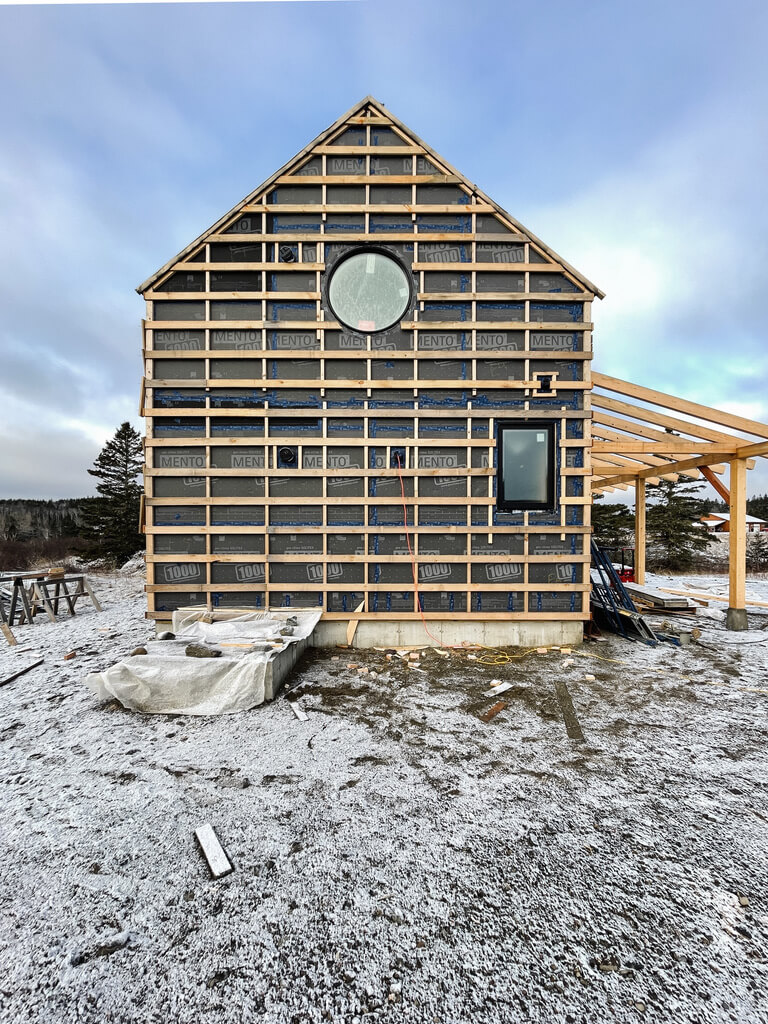
“Natural building” has long occupied a niche position in the U.S., but the perceived mass-market viability of plant-based materials is changing. “We’re not just dirty hippies,” joked Andrew Frederick of Croft, a Maine-based company that manufactures structural insulated panels and predesigned accessory dwelling units with a distinctly modern aesthetic. “We’ve witnessed this major sea change in the industry in the past few years. We don’t have to argue from an environmentalist perspective anymore, or even a healthy materials perspective. Thanks to Builders for Climate Action, we have numbers.” The organization, founded by Chris Magwood and Jen Feigin, is pioneering embodied carbon accounting for residential construction. In 2022, BFCA launched its BEAM estimator: a comprehensive, user-friendly tool that calculates the cradle-to-gate carbon impact of a building, including the carbon storage benefit of materials like straw, hemp, or wood fiber.
For Frederick, the numbers point to straw. The by-product of widely cultivated cereal crops, straw is 45 to 50 percent atmospheric carbon by mass, and the global grain straw harvest accounts for an annual carbon drawdown roughly equal to the annual emissions of India. Currently, most of this drawdown is negated by burning or decomposition. Using straw as the insulating mass in Croft’s panels means that carbon won’t return to the atmosphere until the building is demolished. “If you solve buildings,” said Frederick, “you’ve got nearly half the [carbon] problem fixed. And there are other carbon-capture companies that are proposing these moon-shot technologies that require incredible resources and financial investment to create entirely new infrastructures around climate. And we have a very plain, pragmatic, low-tech solution to converting an entire sector from a carbon-emitting one to a carbon-capturing one. And we can do it today.”
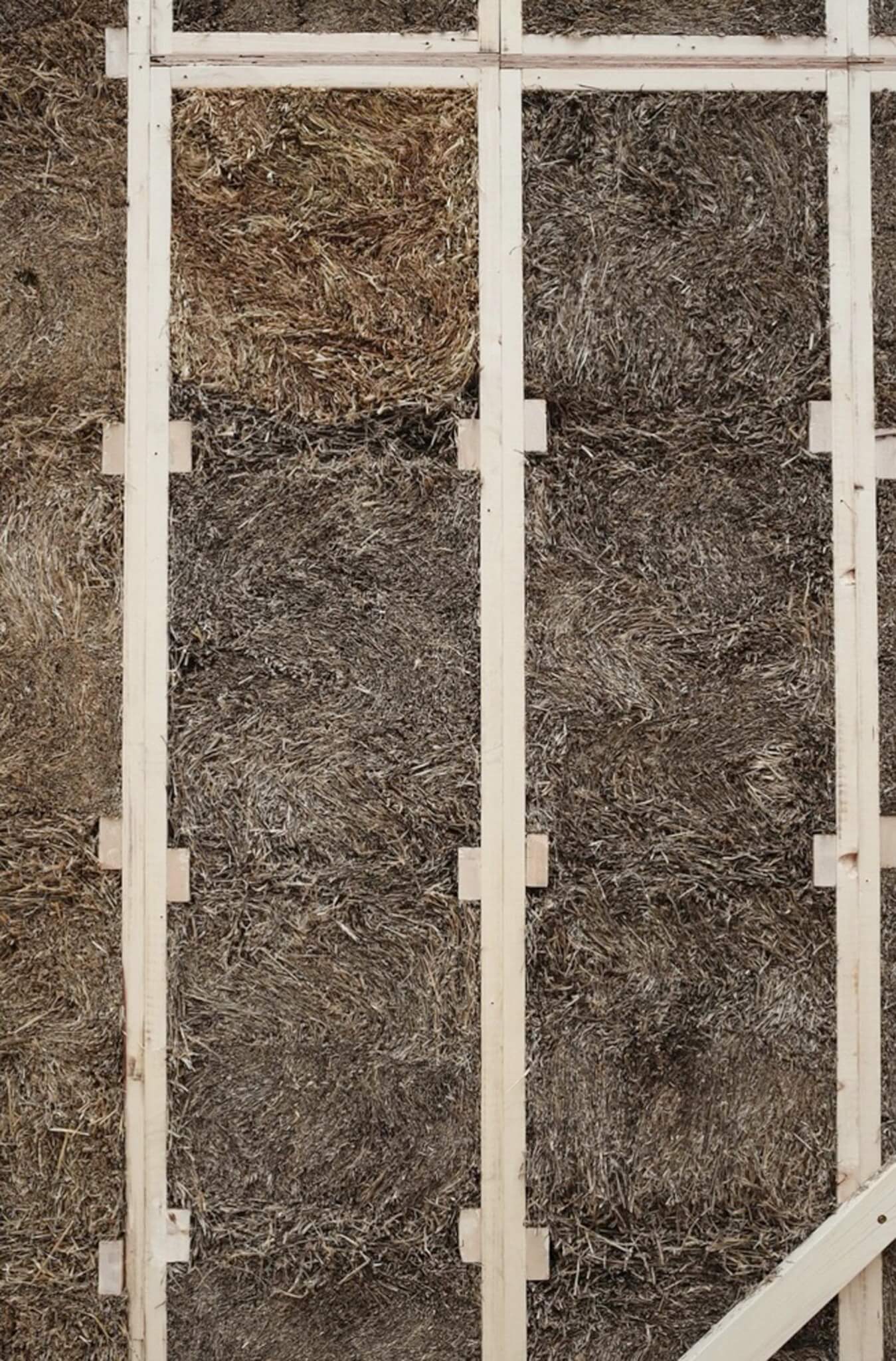
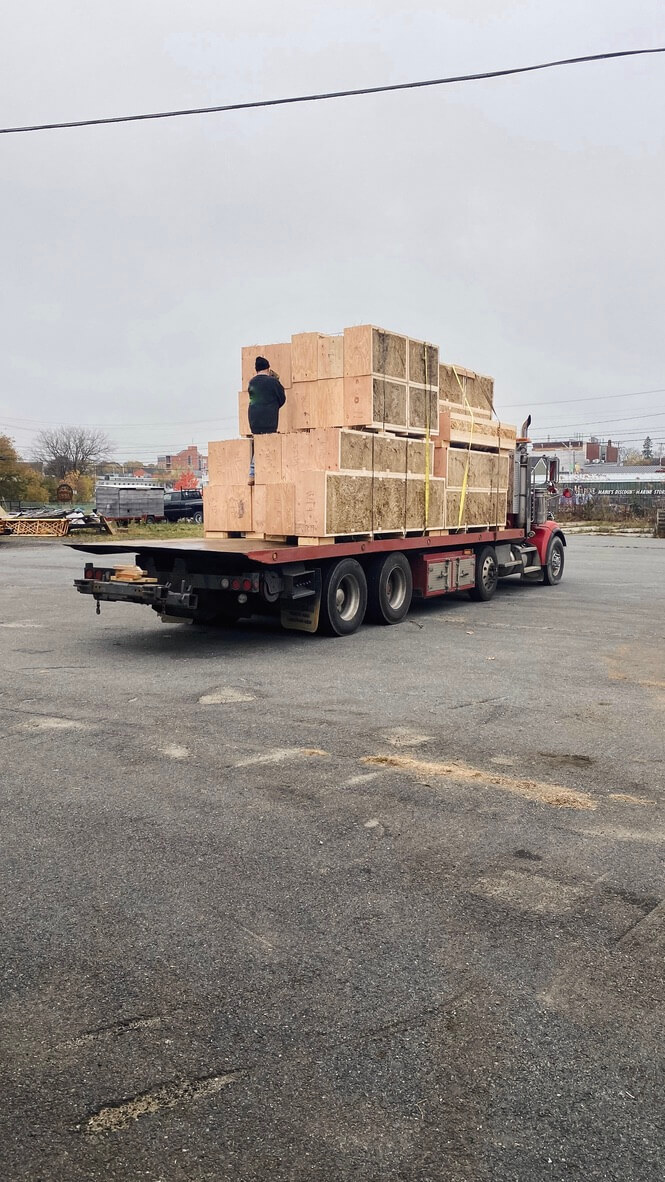
Frederick started Croft in 2020 with a part-time employee and a pair of ratchet straps. Now he has a team of ten and a waiting list. “We’ve made a profit from day one.” While the climate crisis is Croft’s central focus (“If I had to encapsulate Croft in a sentence,” Frederick pitched, “we’re a carbon-capture company”), the affordability and availability of straw combined with a panelized approach allows Croft to achieve critical metrics of speed, quality, and cost. Croft sources organic, no-till straw from farms less than 100 miles away from its operation in Rockland, Maine (population 7,011), and fabricates superinsulated panels that offer exceptional performance. “It’s faster, cheaper, easier, and the building will perform better and last longer,” Frederick says. “What’s not to like?”
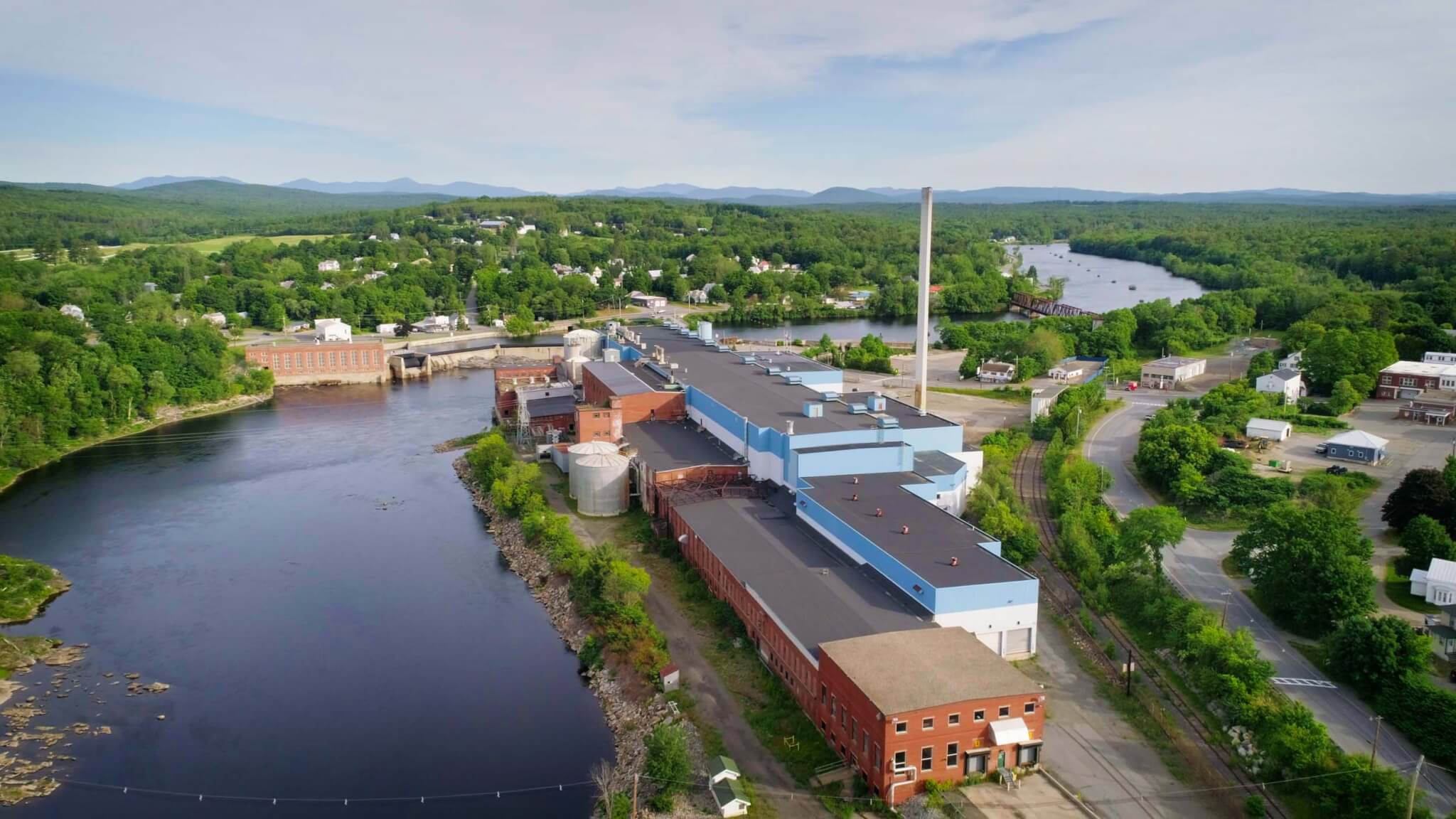
Eighty miles inland, in Madison (population 4,726), another company has set up shop in a recently shuttered paper mill. TimberHP, the first dry-process wood-fiber insulation manufacturer in the U.S., takes waste-stream wood fiber formerly destined for the shiny inserts in JCPenney catalogs and transforms it instead into high-performance, nontoxic insulation. Founded in 2017 by materials chemist Joshua Henry and architect Matt O’Malia, TimberHP bridges a divide between two industries for mutual economic benefit. “You have an insulation market with no knowledge of the forest market, and a forest market with no knowledge of the insulation market,” Scott Dionne, TimberHP’s chief of marketing, said. “You need someone to go in there and say, ‘There’s a gap. And this solves problems on both sides.’”
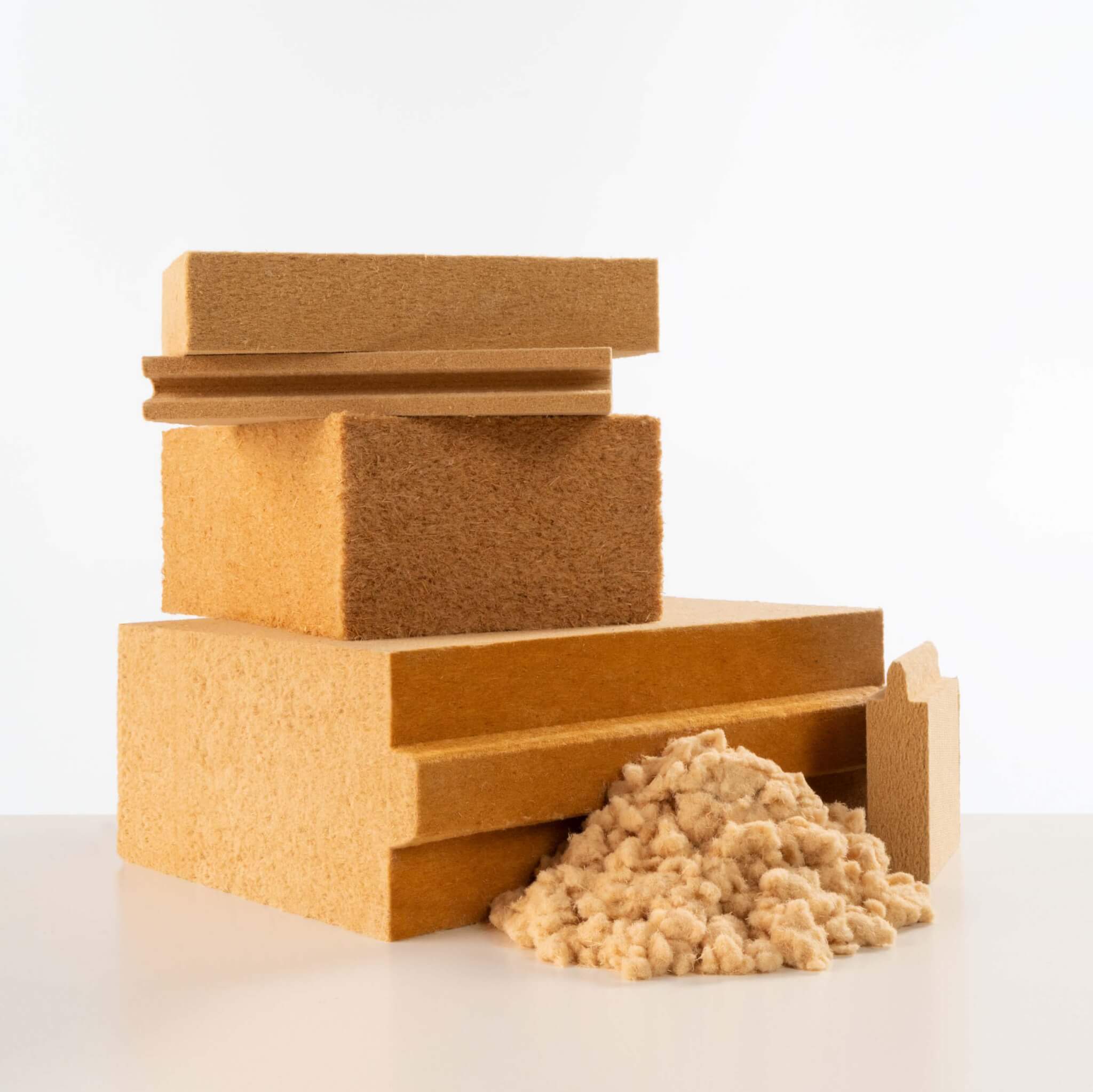
Eighty-nine percent of Maine’s land area is forested, and local sawmills produce a steady stream of waste wood fiber. (Only 30 to 40 percent of the wood in a round log actually makes it into dimensional lumber.) “One thing to clarify is that we’re really using waste stream. These products will either be burned or sent to a landfill. We’re creating a high-value composite from a low-value material,” Dionne explained. In 2022, TimberHP began retrofitting the paper mill with the help of the former plant operators. The HP abbreviates the company’s mission: High Performance, Healthy People, Healthy Planet. Starting this year, it will produce blown-in, batt, and rigid insulation: nontoxic, recyclable, and vapor-open alternatives to standard fiberglass and mineral wool.
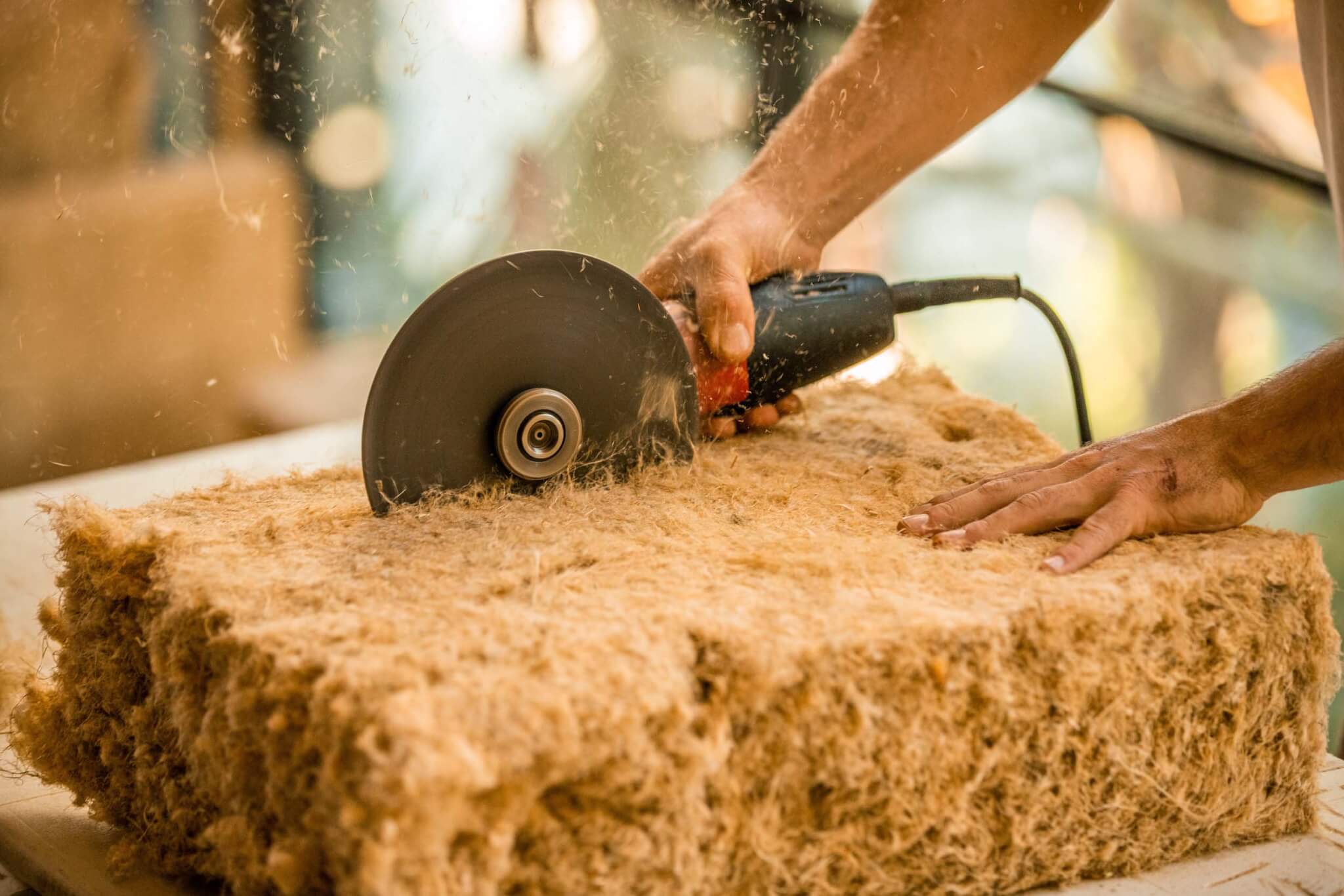
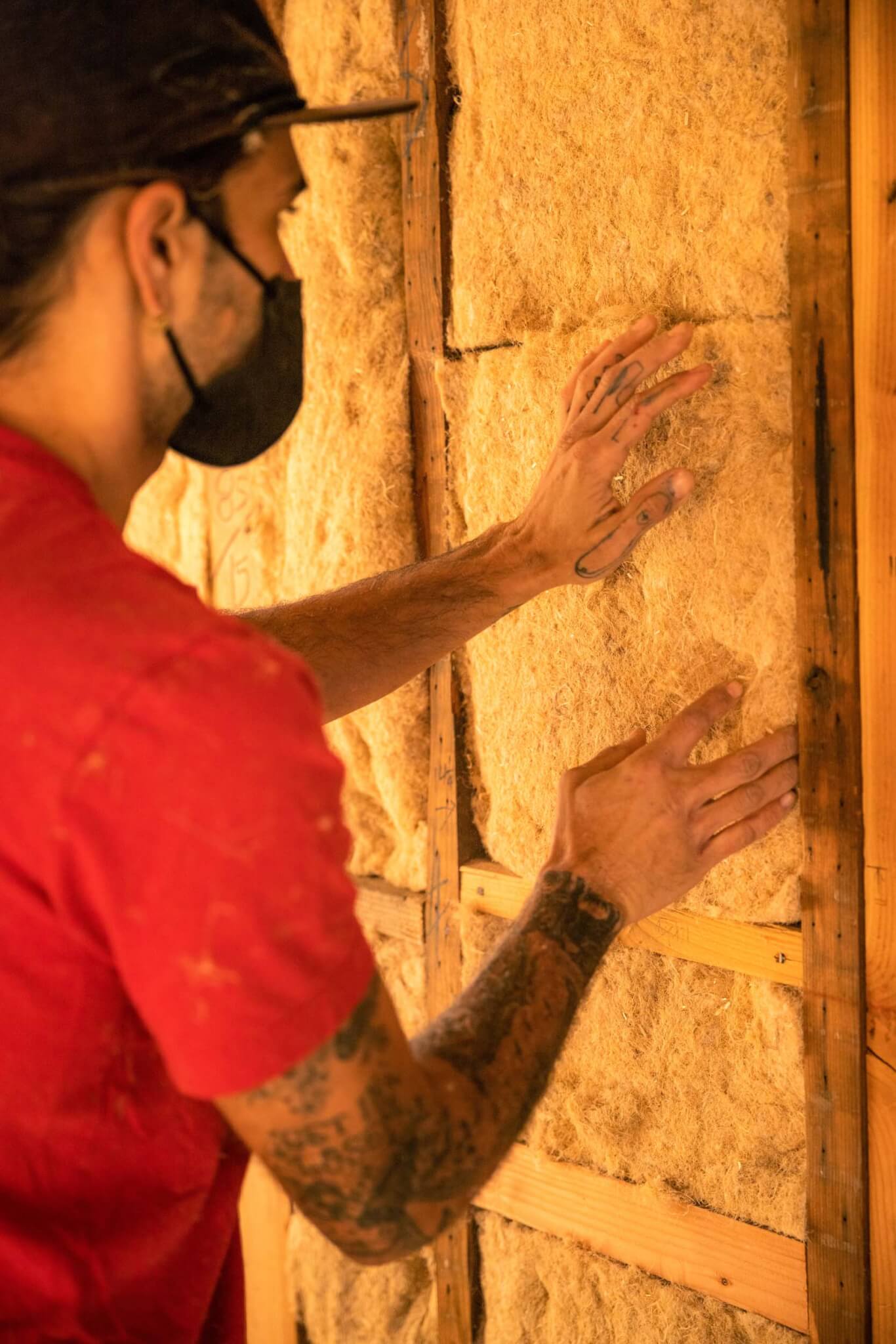
Like TimberHP, Hempitecture is also creating new opportunity in a rural economy by establishing a first-of-its-kind manufacturing facility. Founder Mattie Mead launched Hempitecture out of college in 2012 in an effort to address the staggering quantity of waste created by the construction industry. Initial experiments with hempcrete, a nontoxic composite wall material of hemp hurd mixed with lime binder, led to a business plan to make industrial hempcrete blocks; this led to a prototype project in Idaho—the first commercial hempcrete building in the U.S. In 2018, the farming of industrial hemp was legalized in the U.S., and Mead saw an opportunity in HempWool, a hemp-fiber batt insulation that could be a one-to-one substitute for conventional insulation products. Industrial hemp is a hearty, highyield crop that can be grown as a rotation crop across the country. (The plant grows eight feet tall in three months, and its pith and fiber can be harvested and processed into carbon-storing material.) In 2022, Hempitecture opened its first HempWool manufacturing facility in the small town of Jerome, Idaho (population 12,555), and is partnering with IND Hemp to source hemp fiber from small-scale farmers across rural Montana. As Mead put it, “Our bigger vision is to contribute to the circular economy, to contribute to U.S. agriculture, and to do this regionally.”
As the founder of MaterialDriven, a materials consultancy and library, Purva Chawla has a global view of the current market. Her clients include hotel chains and beauty and skin-care brands looking to incorporate sustainability in their physical and branded presence. Chawla’s library includes materials made from all manner of agricultural by-products and natural processes, including hemp, cork, mushrooms, oyster shells, and chicken feathers, as well as fusion materials that combine plant-based materials with synthetic plastics. “There’s a huge interest in agricultural by-product materials,” Chawla stated, citing several factors: getting value out of a waste stream that otherwise costs money to dispose of; the technical performance capabilities of these materials; and guilt. “Up until five or ten years ago, stuff would get to us in this manicured form, and we’d just assume that there was someone out there who was disposing of it once we were finished, some machinery in place to make it disappear.” Now that sense is changing, especially as it comes to plastic. Chawla is hopeful—“We haven’t exactly transitioned to knowing exactly where everything is coming from and where it’s going, but we’re certainly not unaware”—and has reasons to be optimistic. “Europe always leads the way in implementation. But the U.S. is so exciting because we have all the tools to do it. Technically, we’re getting there so fast.”
We are at a strange moment in the history of human dwelling: We recognize ourselves as tender little piglets needing shelter, and we recognize our collusion with the big bad wolf of the climate crisis. Increasingly vulnerable, we need protection from ever-fiercer huffings and puffings. Materials matter—not just what we choose to create our shelter, but how we harvest, process, install, and dispose of what we use. Can sticks and straw get us to a happy ending?
Greg Esparza is the founder of Cross Cabin Build + Supply in Austin. Jessie Temple is an architect in Austin.










